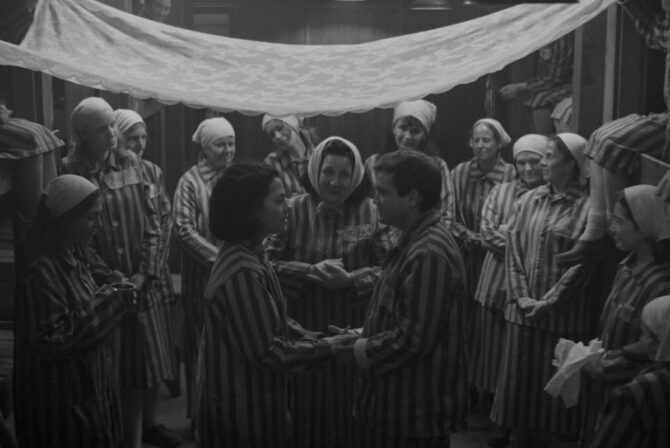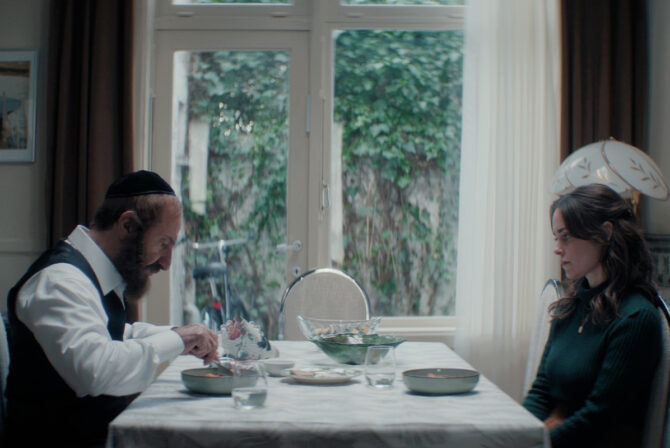Shavuot is a largely ignored and often forgotten Jewish holiday. (Except, of course, for the license it gives to eat dairy products. We’re talking serious cheesecake here.) But the holiday commemorates a very important event: the giving of the 10 Commandments to Moses on Mt. Sinai. The biblical story associated with Shavuot, the Book of Ruth, gives us a phenomenal and beautiful opportunity to talk to our children about how we treat others.
A good kids’ version of the Book of Ruth is hard to find, but here are the important notes. There are three main characters: Ruth, Naomi and Boaz. Each of them, in different ways, provides us with a literary example of kindness, charity and loyalty.
The Story of the Book of Ruth
#1 Ruth is Naomi’s daughter-in-law. Sadly, Naomi’s husband and sons die while they are living in Moab (a country near modern Israel) and Naomi decides to go back to Israel to be near her extended family. Despite the fact that her family all lives in Moab, Ruth decides to go with Naomi so that she will not be alone.
#2 The two women take on the difficult journey and arrive in Israel with very little money or food. According to Jewish law, farmers are required to leave some of their crops in the field so that the poor and the widowed could come and gather it.
#3 Ruth went each day and collected barley and wheat in the fields.
#4 Boaz, the farm owner and a distant relative of Naomi’s, had heard about the kindness that Ruth had shown Naomi and ordered his workers to leave extra grain where Ruth could get it. Soon, Ruth and Boaz fell in love and were married. Two generations later, their great-grandson became the second king of Israel: King David.
Finding the Values
It would make a good Disney movie, right? The family sticks together through hardships and it all works out for a happy ending. While we wait for the film to be produced, however, the Book of Ruth draws out themes of loyalty, compassion, kindness and acts of charity. These themes are often difficult for young children to understand. After all, it’s developmentally appropriate to be egocentric when you’re in preschool. But understanding these concepts is critical in the advancement of your child’s moral compass. I like Ruth’s story because it’s relatable and offers us a platform to ask questions and play out these values, giving young children a context to these sometimes abstract concepts.
Charity:
Preschoolers understand “stuff.” They know what it means to have toys, clothes, and food, and they can also understand not having stuff. Take advantage of Shavuot happening in the spring and do some spring cleaning with your preschooler. Reading this story and asking some questions can be a great precursor to weeding through old toys or clothes that no longer fit and bagging them up for donation. Include your child in the entire process; bring them with you to Goodwill or Salvation Army to drop off their contribution.
• Why do you think farmers have to leave some of the barley for the poor?
• How do you think the people who don’t have enough food feel?
• How do you think it feels to give them food?
• What things do we have too much of that we might give to people that don’t have?
Loyalty/Friendship:
These concepts can be harder for a 2- or 3-year-old. However, there are countless social situations in the life of a 4- or 5-year-old–sharing, waiting your turn, someone else getting to be the line leader–in which your child has to “sacrifice” what they want for someone else, even though it was hard. Use a real life example and compare what they did (or could have done) to the way that Ruth acted or the way that Boaz made sure that Ruth had enough food to take care of both her and Naomi.
• Why do you think Ruth decided to go with Naomi?
• Ruth had to make a decision to leave her family behind to go with Naomi. How do you think Naomi felt about that? How do you imagine Ruth felt?
Kindness/Compassion:
We all want to raise children who are kind and compassionate. Of course, research has shown that the most important predictor of children who grow up with a strong sense of these traits is parents who model kind and compassionate behavior. But what does that really mean?
• First and foremost is to teach them to be kind to themselves. We can’t practice compassion unless we first treat ourselves kindly. This will present itself most clearly when you make a mistake. What kind of self-talk are you modeling for your child? And how does he react when he makes a mistake?
• “Catch” them in moments of kindness and label it for them. “I loved watching you sharing that toy. It was a very kind thing to do.” Or “I noticed that when that girl was sad, you wanted to give her a hug. That was very kind of you.” (The opposite should also be true–use the word “unkind” to label behavior where they did not act in a way that was compassionate towards someone else. Talk to them about what other choice they could have made.)
• Give them opportunities to be kind to others in a more “structured” way. Volunteer together at a soup kitchen, participate in a walk for a cause, clean up in the park.
• Reread (or retell) the Book of Ruth over again. Like a treasure hunt, search for all the examples of kindness.
o How do you think it made Naomi feel when Ruth decided to stay with her?
o What do you imagine that Boaz was thinking when he decided to leave extra food for Ruth?
o What would you have done if you were Ruth? Or Boaz?
What It’s All About
Values like these are the building blocks for creating a compassionate and kind world. Using stories as a platform on which to initiate conversations offers our children a chance to see these concepts in action and outside of themselves. Only then can they internalize it and enact it in their own lives. It is an amazing thing to see empathy between two 3-year-olds, or to see compassion exist in a concrete way for a 4-year-old. The more we offer our children ways to see the world through a kind lens, the more perspective they are able to generate themselves and closer their actions will come to those of Ruth and of Boaz.
Want more about Shavuot? Check out the basics, books and music for kids, a delicious edible craft, and recipes for blintzes and cheesecake.







